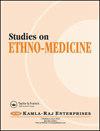喜马拉雅地区卫生保健系统的传统医学实践和居民共识
Q2 Social Sciences
引用次数: 0
摘要
本研究是在北阿坎德邦加尔瓦尔喜马拉雅地区查莫利区的达索利街区进行的。这项研究的目的是记录喜马拉雅偏远地区居民关于植物资源的文化和土著知识,以供保健管理实践之用。采用问卷调查法和实地考察法对具有民族医学意义的不同植物种类进行资料收集。被调查者的共识因子值从0.36到0.67不等,肝脏疾病的最高值为0.67。最主要的植物部位是根。治疗胃肠道疾病的种类最多(21种),其次是皮肤病(17种)和呼吸系统疾病(17种)。未来有必要对植物的不同部位进行研究,以获得植物特定部位可治愈疾病的精确信息,这将为传统草药的药理学评价开辟进一步的道路。民族植物资源的开发利用和保护是重建传统知识的必要条件(Reddy 2012;Payyappallimana and Fadeeva 2013;Biswakarma et al. 2017;Raj等人,2018;Pala et al. 2019)。全球传统药物中使用的植物种类约为5300种(Hamilton 2004)。据世界卫生组织估计,发展中国家约有70%至95%的人依靠传统的植物知识获得保健(世界卫生组织,2011年)。印度拥有大约17000种植物,其中7500种被称为药用植物(Nayar 2011)。大约65%的印度人口依赖传统的医疗系统(Timmermans 2003)。民族植物学研究通过记录生物资源保护和利用的传统知识而具有重要意义(Muthu et al. 2006)。因此,建立当地植物物种知识具有显著的好处(Baðcý 2000),这些传统知识由传统治疗师保守秘密,只传递给他们自己的一代(Panghal等人,2010)。喜马拉雅西北部的这一部分位于北阿坎德邦,以茂密的植被和多种药用植物而闻名,大多数药用植物都是在该邦记录的(Singh et al. 2005;Kala 2004),其次是锡金和北孟加拉(Samant et al. 1998)。该地区的大多数人主要依靠传统治疗师(Vaidyas)治疗疾病(Kala 2000)。几位研究人员已经探索了印度喜马拉雅地区药用植物的使用(Gaur和Sharma 2011;Singh和Rawat 2011;Kumar et al. 2011;Bhat et al. 2013;Malik et al. 2015)。由于全球商业化和社会经济转型的影响,植物资源的民族医学知识一直在不断减少(Kunwar和Adhikari 2005)。因此,迫切需要记录这些植物的传统知识,以发挥其药用价值,对未来的药物发现和开发也具有重要意义。鉴于上述背景,《喜马拉雅地区的医学实践与共识》161民族医学,13(3):160-168(2019)》目前的研究工作主要围绕以下两个目标展开。本文章由计算机程序翻译,如有差异,请以英文原文为准。
Traditional Medicinal Practices and Consensus of Inhabitants for Health Care Systems in Himalayas
The present study was carried out in the Dhasoli block of district Chamoli, in Garhwal Himalaya of Uttarakhand. The aim of the study was to document the cultural and indigenous knowledge of plant resources for health care management practices among the inhabitants of remote areas of Himalaya. Questionnaire and field visits were used for data collection on different plant species with ethnomedicinal importance. The informants’ consensus factor value ranged from 0.36 to 0.67 with the highest value of 0.67 for a liver disorder. Most dominant plant parts used were roots. Gastrointestinal disorder was treated by the highest number of species (21) followed by (17) species for dermatological disorders and respiratory disorders (17). There is a need for future research for different parts of plants for precise information about the curable ailments of a particular part of the plant which will open further path for pharmacological evaluation of traditional herbal medicine. *Address for correspondence: Jahangeer A. Bhat INTRODUCTION The exploration and utilization of ethnobotanical resources and their conservation is essential for rebuilding the traditional knowledge (Reddy 2012; Payyappallimana and Fadeeva 2013; Biswakarma et al. 2017; Raj et al. 2018; Pala et al. 2019). Plant species used in traditional medicines globally is around 5300 species (Hamilton 2004). As estimated by World Health Organization, about seventy to ninety five percent of people in developing countries rely on the traditional knowledge of plants for health care (World Health Organization 2011). India harbors about 17,000 plant species, of which 7500 are known as medicinal plants (Nayar 2011). About sixty five percent of the Indian population depends on the traditional system of medicine (Timmermans 2003). Ethnobotanical research is important by documenting the traditional knowledge for the conservation and utilization of bio resources (Muthu et al. 2006). Therefore, the establishment of local knowledge of plant species has significant benefits (Baðcý 2000) and this traditional knowledge is kept secret by traditional healers and is only passed to their own generations (Panghal et al. 2010). This part of north-western Himalaya which lies in the state of Uttarakhand is known for dense vegetation with a wide species of medicinal plants and the majority of the medicinal plants have been recorded from this state (Singh et al. 2005; Kala 2004), followed by Sikkim and North Bengal (Samant et al. 1998). The majority of the people from this area are mainly dependent on traditional healers (Vaidyas) for treating diseases (Kala 2000). Indian Himalayan region has been explored by several researchers for use of medicinal plants (Gaur and Sharma 2011; Singh and Rawat 2011; Kumar et al. 2011; Bhat et al. 2013; Malik et al. 2015). Ethnomedicinal knowledge of plant resources has been constantly diminishing due to the influence of global commercialization and socio-economic transformation (Kunwar and Adhikari 2005). Therefore, there is an urgent need to record this traditional knowledge of plants for its medicinal values and it is also important for future drug discovery and development. In the view of above background, the MEDICINAL PRACTICES AND CONSENSUS IN HIMALAYAS 161 Ethno Med, 13(3): 160-168 (2019) present research work was carried out with the following two objectives.
求助全文
通过发布文献求助,成功后即可免费获取论文全文。
去求助
来源期刊

Studies on Ethno-Medicine
Social Sciences-Cultural Studies
CiteScore
0.50
自引率
0.00%
发文量
13
期刊介绍:
Studies on Ethno-Medicine is a peer reviewed, internationally circulated journal. It publishes reports of original research, theoretical articles, timely reviews, brief communications, book reviews and other publications in the interdisciplinary field of ethno-medicine. The journal serves as a forum for physical, social and life scientists as well as for health professionals. The transdisciplinary areas covered by this journal include, but are not limited to, Physical Sciences, Anthropology, Sociology, Geography, Life Sciences, Environmental Sciences, Botany, Agriculture, Home Science, Zoology, Genetics, Biology, Medical Sciences, Public Health, Demography and Epidemiology. The journal publishes basic, applied and methodologically oriented research from all such areas. The journal is committed to prompt review, and priority publication is given to manuscripts with novel or timely findings, and to manuscript of unusual interest. Further, the manuscripts are categorised under three types, namely - Regular articles, Short Communications and Reviews. The researchers are invited to submit original papers in English (papers published elsewhere or under consideration elsewhere shall not be considered).
 求助内容:
求助内容: 应助结果提醒方式:
应助结果提醒方式:


